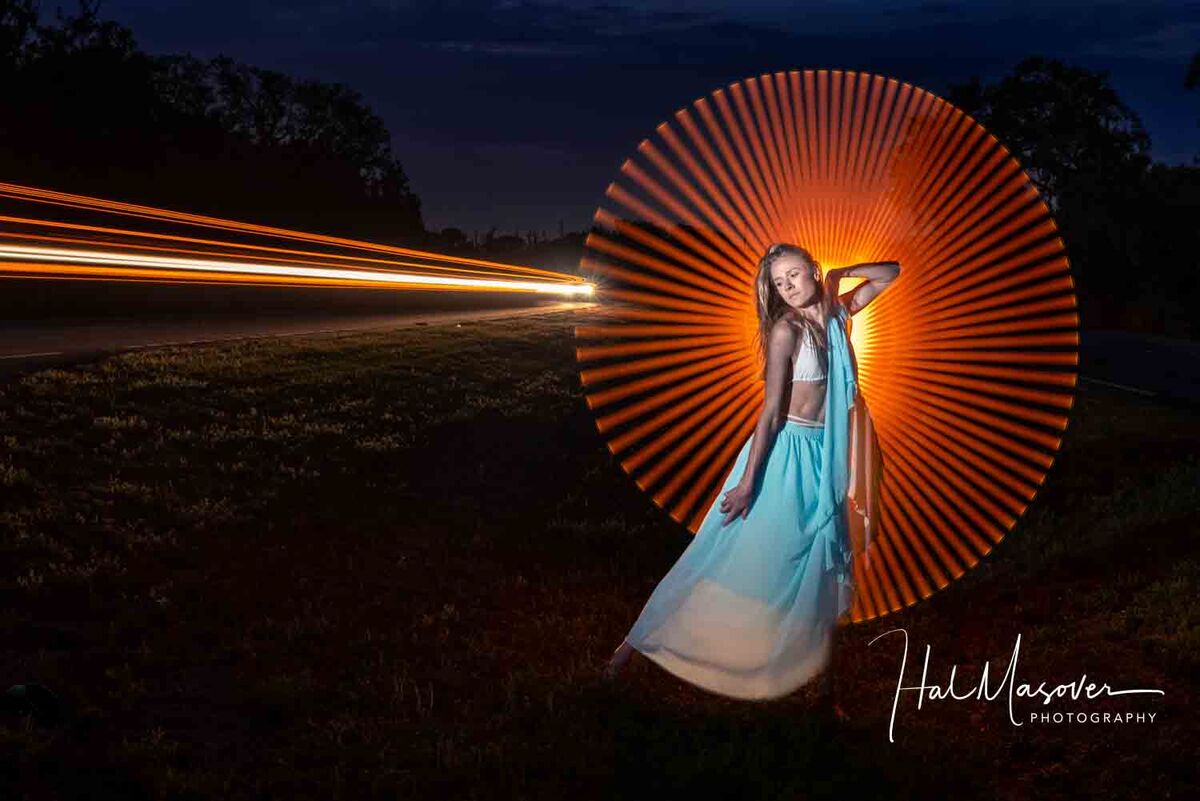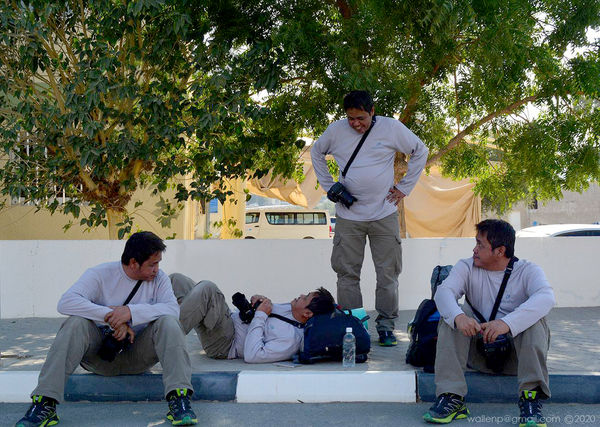Posts for: Hal Masover
Mar 23, 2024 16:02:46 #
Mar 23, 2024 14:51:07 #
starlifter wrote:
Refurbished --- aka --- used.
This is the thing almost everyone who buys this way misses. Saving $85 on a $720 lens works out to almost 12% savings. So for a 12% discount you are buying a piece of equipment that someone returned because of a manufacturer's defect. Now, I get that it's Nikon refurbishing it but that doesn't mean they can correct the problem. Remember, the manufactured the problem in the first place. So in my mind, the odds are greater that this particular piece of equipment will end up going back to Nikon at some point. So basically I'm getting paid $85 to take that increased chance. If it has to go back to Nikon one time then at that point I'm about even. Two times and it's more trouble than it's worth.
If you're a hobbiest maybe that's OK, but not for a working photographer this is a bad deal. I'd much rather buy someone's like new used gear from a reputable dealer. My assumption, or guess if you will, is that if it was defective it already would have been returned.
Let me give you an example. I once bought a Nikon DSLR from a former dealer. He had closed his store, as happened with the vast majority of stores. This body was one he kept for himself but he didn't like it. So it sat on his shelf for probably 5 or 6 years. Probably didn't have 1,000 activations. Pristine. $700. I haven't bought a new body or lens in a decade and everything works and everything has backup. And I've never bought refurbished.
Although, full disclosure, my opinion is somewhat clouded by a Samsung phone I had that was under warrantee. They replaced it with a refurbished phone that didn't work, so they replaced that with a refurbished phone that didn't work. Third time was the charm but also the last time I've ever touched refurbished equipment.
And recently a friend bought a refurbished D5200 with a refurbished Nikon lens. So you'd think, OK, came from Nikon's shop, should be all good, right? Wrong. The lens wouldn't mount on the body! Whole kit had to go back. So no thanks, no refurbs for me.
Mar 23, 2024 14:32:34 #
starlifter wrote:
Refurbished --- aka --- used.


Mar 22, 2024 13:16:57 #
The first consideration is the glass. Cheap out on your filter and you're defeating the money you invested in your lens. The standard for good filter glass is made the Schott. I only buy filters made with Schott glass. But there's a lot of companies that use Schott glass including ones that sell their filters cheap, which brings us to the next consideration. Quality of the threads. I'm assuming you want to buy a threaded filter that you can screw on the end of your lens. Other options are magnetic filters and square filters both of which are part of systems and involve more investment than I personally would make in filters. So back to the threads. The glass is easy. Just stick with Schott. But there's no easy way to figure out if you're getting good quality threads on your filter and that's important. The rough rule of thumb is that cheap filters are the ones that tend to get stuck when you're putting them on or taking them off. Poor quality material and/or machining on those threads. Of the three brands mentioned so far, B&W, Breakthrough and K&F, Breakthrough is an excellent middle choice. Tiffen was also mentioned and it's another excellent middle choice. K&F is hit and miss. Some of their stuff is good enough for very little money and some of it is crap so for this reason I avoid that brand. You seem committed to buying an ND filter. I agree with other comments that if you're trying to reduce glare you're probably better off with a polarizing filter. But if you are intent on an ND filter, you probably want a 6 stop filter. Variable filters tend to be overall lower quality than non-variable. But my main advice is stick with the known decent quality for the buck brands like Breathrough and Tiffen.
Mar 9, 2024 13:47:15 #
MJPerini wrote:
Anything that gets us out taking pictures, is prob... (show quote)


 In regards to your last sentence, I'll have you know I resemble that remark!
In regards to your last sentence, I'll have you know I resemble that remark!Mar 9, 2024 13:24:19 #
Bridges wrote:
burkphoto posted a link where a professional photo... (show quote)
A long time ago a friend of mine referred to prime lenses as an workout program for photographers. "Zoom in Hal, zoom out Hal." she said. I hear her saying that everytime I decide to shoot with a prime for awhile. I mostly do it because I have some primes that are sub f2.0 and I don't have any zooms that fast. But really, the only reason I'm going to compose differently with a prime is either because I can't, such as not being able to get a wide shot with a telephoto, or I'm just tired of moving back and forth using my feet to zoom. Creativity? Maybe zooms make some people lazy. For me this is an exercise in restriction to see if anything gets forced out. A lot of photography for me has always been that I see something and do I have the skill and/or equipment to realize that vision. So restricting myself to only certain tools would be taking a step backwards in that process.
Mar 2, 2024 13:16:09 #
BebuLamar wrote:
I don't own one but my these are what I think. Tak... (show quote)
I'm a dedicated Nikon user. I used to have a D600 and now own at D750 and D850. Recently Nikon had a 30 day free trial on the Zfc so I got one to try it out and sent it back. It's an amazing camera but I absolutely do not like holding it in my hand and I don't like the controls. For that reason I'm not interested in the Zf. I've shot the Z9 and the Z7II and to me these feel like Nikons in my hand. I don't know if Nikon is reading this but if you are - I've got money in the bank in hopes that you come out with a Z6III. In my mind it would be the Zf in a more ergonomic body. Please Nikon. I've been waiting almost 2 years for it. Please.
Feb 19, 2024 20:31:25 #
Wallen wrote:
We usually take photos to grab the moment. br A fe... (show quote)
In my early days of learning, knowing almost nothing, I imagined the photo I wanted and then tried to create that image. I failed most of the time but every once in awhile I succeeded or even exceeded what I had in my mind, and that kept me going, driving me to learn more so I could create what I saw in my mind. Looking back on that now, I realize I don't do that as much. I think the gap between what I see and what I can produce has narrowed, and also my knowledge of what my skills can produce has increased.
But your post reminds me that the weakest part of my photography is the pre work. Imagining what I want and then taking the steps to get there. I do some of that, but rarely do much other than show up with my expensive equipment, click away, and then see what magic I can create afterwards in my computer.
Preplanning as you describe, has always been a thing to do someday, and it's one of those somedays that never seems to get here. Maybe it's time to change that. Work backwards, as you describe. Imagine something I'd like to create and then work backwards to figure out all the steps I need to create that.
But, just to show off a bit, preplanning is not completely alien to me. In the attached photo I imagined how these elements would all work together. The car lights, the light painting and the model. Yes, it all happened in real time so there were pleasant surprises and failures but the whole shoot required scouting and imagination and preparation. I just need to imagine more projects and tackle them that way. Thanks.

Feb 18, 2024 18:31:08 #
GLSmith wrote:
I am a credentialed photographer for SpaceX, ULA & NASA launches, adding an elementary cheat sheet
Thank you! I live just to the north near the entrance to Canaveral National Seashore and to date have mostly shot the streak at night. You just opened up a lot more possibilities for me! :)
Feb 13, 2024 18:35:26 #
GLSmith wrote:
If you decide to "donate" make sure you still retain ownership & get photo credit



Feb 12, 2024 19:41:32 #
Bruce T wrote:
If I am traveling and I don’t want to pack my computer, I use my NewQ FileHub. It allows me to take the data from my SD card and download the images to my 1TB SanDisk SSD.
It is all self contained. You can download software so that you can see the images on your phone or tablet.
It is all self contained. You can download software so that you can see the images on your phone or tablet.
Let me see if I understand what this thing does. It's got a card reader built in so I insert my SD card into it and it reads my card and transfers my data to a device I plug into it. (Yes, I know if can work wirelessly but stay with me). So it's not an SSD drive itself, it just transfers data from an SD card to an SSD. Am I understanding it correctly?
Feb 12, 2024 11:52:14 #
kotography4u wrote:
Hi - I've looked at Amazon and Ebay to see if I could find this price and couldn't locate anything that inexpensive - can you tell me where you located this price? I have a similar need...
Thanks
Kevin
Thanks
Kevin
It was on eBay and the seller just had 8 cards, new in the wrapper. I bought all 8. There's a new function, at least new to me, on eBay called make an offer. I think the seller was asking something like $12 each and I offered $8 and the offer was accepted.
Feb 12, 2024 10:34:49 #
charlienow wrote:
I use 2 methods to store files when I travel. The ... (show quote)
Thank you. And thanks for the tip about testing cards. That's very odd that they would work on a D7200 and not a D500 but now I have been warned and so will test! :)
Feb 12, 2024 09:45:50 #
Robertl594 wrote:
I use smaller fast memory cards. I never go larger... (show quote)
Thanks. I've heard good things about ProGrade on this forum before. I only recently bought my D850 and bought a Lexar CF Express B reader and a Lexar CFE card. That setup didn't work well as it took something like 6 hours to upload photos from a wedding. Lexar was very kind and refunded my money for the reader but I haven't replaced it yet. What reader are you using for your CFE B card?
Feb 11, 2024 13:33:53 #
Thank you all! I am following your advice and in addition to SD cards I already own, I got a deal for a package of 8 SanDisk 64gb cards with up to 200mb read speed at $8 each. So I'm all carded up now! :)
